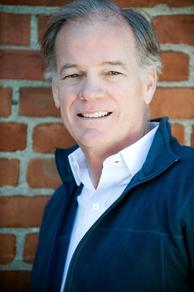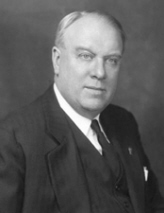Foley vs Malloy II? A History of Connecticut Gubernatorial Rematches
It has been 72 years since the last time a gubernatorial candidate was victorious in a rematch election in the Nutmeg State; only two have had the opportunity since

Although it is expected to be one of the most competitive gubernatorial races in the nation this November and Republican frontrunner Tom Foley was rumored to be launching a rematch bid against Democratic incumbent Dan Malloy as early as summer 2012, polling between the two candidates has been scarce to date in Connecticut’s 2014 race for governor.
Only one survey has been conducted so far this year (Quinnipiac) compared to four already at this point through the first four months of 2010.
Connecticut’s major party filing deadline is June 10th with the primary to follow two months later on August 12th.
Foley, who narrowly won the GOP primary in 2010 by 3.2 points over Lieutenant Governor Michael Fedele, would appear to have the clearest path to the nomination this year among the half-dozen Republicans currently vying for the bid.
If Foley does emerge once again as his party’s nominee, it will be the second time in just over a decade that Connecticut has seen a rerun in a gubernatorial contest, but only the sixth time in the last 140+ years.
And he’ll attempt to become the first challenger to win such a race since World War II.
Smart Politics analyzed Connecticut’s 142 gubernatorial elections since statehood and found that 37 of these involved rematches between the top two finishers from a previous cycle, or 26 percent.
Smart Politics previously reported that Colorado could potentially have its first gubernatorial rematch among major candidates in state history this cycle (Tom Tancredo vs. John Hickenlooper) while Maine (Eliot Cutler vs. Paul LePage) has already had 21, although just three since the 1880s.
In Connecticut, there have been 37 cycles since 1788 featuring gubernatorial rematches between a previous election’s first and second place finishers, of which eight such challengers were successful the second time around.
(One additional third-place finisher in 1810, Federalist Roger Griswold, came back to defeat incumbent Federalist John Treadwell to win the governorship in 1811.)
The overwhelming majority of these races – 32 of them – occurred when the state constitution mandated one-year terms for the office through the 1876 election.
Just four such rematches occurred between 1878 and 1950 when statewide elections took place every two years.
Meanwhile, only one has arisen during the 15 election cycles since 1954 when the state moved to four-year terms.
Frequency of Cycles with Gubernatorial Rematches in Connecticut
|
Years
|
Election Cycle
|
# Elections
|
# Rematches
|
# Wins
|
|
1788-1876
|
1-year
|
90
|
33*
|
8*
|
|
1878-1950
|
2-year
|
37
|
4
|
1
|
|
1954-2010
|
4-year
|
15
|
1
|
0
|
Note: Table compiles rematches between previous first and second-place finishers with the exception of the Election of 1811 in which a previous third-place finisher successfully launched a rematch bid. Compiled by Smart Politics.
The most recent rematch came in 2002 when Democrat Bill Curry challenged two-term incumbent John Rowland eight years after their first electoral battle.
In 1994, then Comptroller Curry was narrowly defeated by the former Republican Congressman in a competitive four-way open seat race to replace Lowell Weicker.
Rowland beat Curry by just 3.5 points with a plurality 36.2 percent of the vote as two other candidates landed in double-digits: Lieutenant Governor Eunice Gross (from Weicker’s A Connecticut Party) at 18.9 percent and State Senator and Independence candidate Tom Scott with 11.4 percent.
Eight years later, Curry reprised his role as the Democratic nominee but was more easily dispatched by Rowland who recorded a 12.2-point win.
Prior to Curry, Connecticut voters had not enjoyed (or endured) a rerun of gubernatorial candidates since the early 1940s.

Baldwin, a former majority leader in the state House, came back two years later and won by 4.5 points – marking the last time a gubernatorial challenger has won a rematch election in the Nutmeg State.
Hurley then challenged Baldwin in 1944, but fell short by 3.1 points.
The only other cycles to feature a follow-up race between first and second place finishers since Connecticut moved to two-year terms were in 1892 and 1928.
Democrat Luzon Morris won close races against Republican Samuel Merwin in 1890 and 1892, however neither Morris nor Merwin were seated after the 1890 contest due to election irregularities. (Sitting GOP governor Morgan Bulkeley, who was not on the ballot, simply remained in office for another term as a result).
In 1926 and 1928, John Trumbull (the fourth generation of Trumbulls to serve as governor) defeated Democrat Charles Morris by 28.2 and 8.0 points respectively.
When elections occurred yearly between 1788 and 1876, second place candidates returned to challenge gubernatorial election winners quite frequently – totaling 37 times across 32 cycles.
Seven second-place challengers launching rematch bids were successful during this period:
· 1817: Democrat-Republican Oliver Wolcott over Federalist John Smith
· 1835: Democrat Henry Edwards over Whig Samuel Foot
· 1844: Whig Roger Baldwin over Democrat Chancey Cleveland
· 1867: Democrat James English over Republican Joseph Hawley
· 1869: Republican Marshall Jewell over Democrat James English
· 1870: Democrat James English over Republican Marshall Jewell
· 1871: Republican Marshall Jewell over Democrat James English
On three other occasions, neither candidate involved in the rematch was victorious in the race:
· In 1827, 10-term Democratic-Republican incumbent Oliver Wolcott and former second-place Federalist challengers Timothy Pitkin and David Daggett all lost to Democratic-Republican Gideon Tomlinson.
· In 1833, two-term National Republican incumbent John Peters and 1831 runner-up Anti-Masonic nominee Zalmon Storrs were both defeated by Democrat Henry Edwards.
· In 1855, one-term Whig incumbent Henry Dutton and 1854 Democratic runner-up Samuel Ingham both lost to American nominee William Minor.
Among the potential challengers seeking rematches in Colorado (Tancredo), Maine (Cutler), and Connecticut, Tom Foley appears at this point in the election cycle to have the best chance to win the second time around.
Gubernatorial Election Rematches in Connecticut, 1788-2010
|
Year
|
Previous Winner
|
Party
|
Previous Runner-Up
|
Party
|
Rematch Winner
|
|
1803
|
Jonathan Trumbull, Jr.
|
Federalist
|
Ephriam Kirby
|
Dem-Rep
|
Trumbull
|
|
1805
|
Jonathan Trumbull, Jr.
|
Federalist
|
William Hart
|
Dem-Rep
|
Trumbull
|
|
1806
|
Jonathan Trumbull, Jr.
|
Federalist
|
William Hart
|
Dem-Rep
|
Trumbull
|
|
1807
|
Jonathan Trumbull, Jr.
|
Federalist
|
William Hart
|
Dem-Rep
|
Trumbull
|
|
1808
|
Jonathan Trumbull, Jr.
|
Federalist
|
William Hart
|
Dem-Rep
|
Trumbull
|
|
1811
|
John Treadwell
|
Federalist
|
Roger Griswold*
|
Federalist
|
Griswold
|
|
1814
|
John Smith
|
Federalist
|
Elijah Boardman
|
Dem-Rep
|
Smith
|
|
1815
|
John Smith
|
Federalist
|
Elijah Boardman
|
Dem-Rep
|
Smith
|
|
1817
|
John Smith
|
Federalist
|
Oliver Wolcott
|
Dem-Rep
|
Wolcott
|
|
1819
|
Oliver Wolcott
|
Dem-Rep
|
Timothy Pitkin
|
Federalist
|
Wolcott
|
|
1820
|
Oliver Wolcott
|
Dem-Rep
|
Timothy Pitkin
|
Federalist
|
Wolcott
|
|
1821
|
Oliver Wolcott
|
Dem-Rep
|
Timothy Pitkin, Nathan Smith
|
Federalist
|
Wolcott
|
|
1822
|
Oliver Wolcott
|
Dem-Rep
|
Timothy Pitkin
|
Federalist
|
Wolcott
|
|
1823
|
Oliver Wolcott
|
Dem-Rep
|
Timothy Pitkin, Zephaniah Swift
|
Federalist
|
Wolcott
|
|
1824
|
Oliver Wolcott
|
Dem-Rep
|
Timothy Pitkin
|
Federalist
|
Wolcott
|
|
1825
|
Oliver Wolcott
|
Dem-Rep
|
Timothy Pitkin, Nathan Smith
|
Federalist
|
Wolcott
|
|
1826
|
Oliver Wolcott
|
Dem-Rep
|
Timothy Pitkin, Nathan Smith, David Daggett
|
Federalist
|
Wolcott
|
|
1827
|
Oliver Wolcott
|
Dem-Rep
|
Timothy Pitkin, David Daggett
|
Federalist
|
Gideon Tomlinson
|
|
1833
|
John Peters
|
Nat’l Rep
|
Zalmon Storrs
|
Anti-Masonic
|
Henry Edwards
|
|
1835
|
Samuel Foot
|
Nat’l Rep
|
Henry Edwards
|
Democrat
|
Edwards
|
|
1840
|
William Ellsworth
|
Whig
|
John Niles
|
Democrat
|
Ellsworth
|
|
1844
|
Chauncey Cleveland
|
Democrat
|
Roger Baldwin
|
Whig
|
Baldwin
|
|
1851
|
Thomas Seymour
|
Democrat
|
Lafayette Foster
|
Whig
|
Seymour
|
|
1855
|
Henry Dutton
|
Whig
|
Samuel Ingham
|
Democrat
|
William Minor
|
|
1856
|
William Minor
|
American
|
Samuel Ingham
|
Democrat
|
Minor
|
|
1859
|
William Buckingham
|
Republican
|
James Pratt
|
Democrat
|
Buckingham
|
|
1862
|
William Buckingham
|
Republican
|
I. Loomis
|
Democrat
|
Buckingham
|
|
1863
|
William Buckingham
|
Republican
|
Thomas Seymour
|
Democrat
|
Buckingham
|
|
1865
|
William Buckingham
|
Republican
|
Origen Seymour
|
Democrat
|
Buckingham
|
|
1867
|
Joseph Hawley
|
Republican
|
James English
|
Democrat
|
English
|
|
1869
|
James English
|
Democrat
|
Marshall Jewell
|
Republican
|
Jewell
|
|
1870
|
Marshall Jewell
|
Republican
|
James English
|
Democrat
|
English
|
|
1871
|
James English
|
Democrat
|
Marshall Jewell
|
Republican
|
Jewell
|
|
1892
|
Luzon Morris**
|
Democrat
|
Samuel Merwin
|
Republican
|
Morris
|
|
1928
|
John Trumbull
|
Republican
|
Charles Morris
|
Democrat
|
Trumbull
|
|
1942
|
Robert Hurley
|
Democrat
|
Raymond Baldwin
|
Republican
|
Baldwin
|
|
1944
|
Raymond Baldwin
|
Republican
|
Robert Hurley
|
Democrat
|
Baldwin
|
|
2002
|
John Rowland
|
Republican
|
Bill Curry
|
Democrat
|
Rowland
|
* Table compiles rematches between a previous first and second-place finishers with the exception of the Election of 1811 in which a previous third-place finisher defeated the incumbent in the rematch. ** Morris was never seated. Compiled by Smart Politics.
Follow Smart Politics on Twitter.
